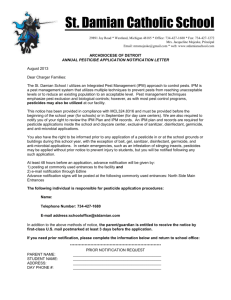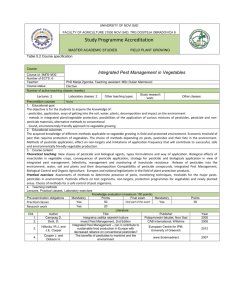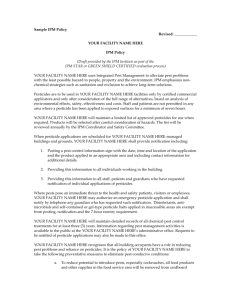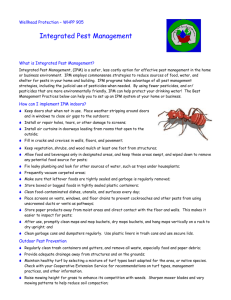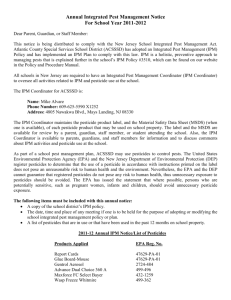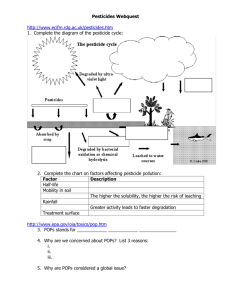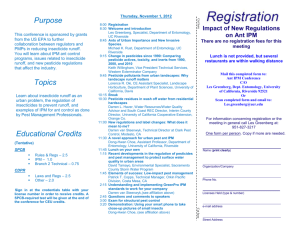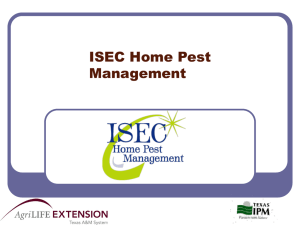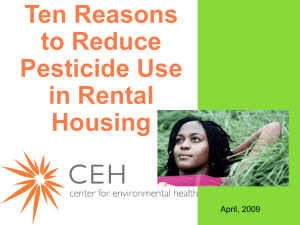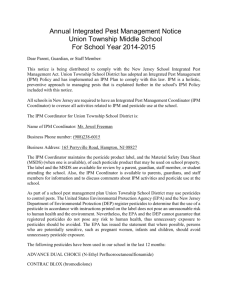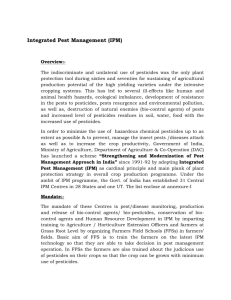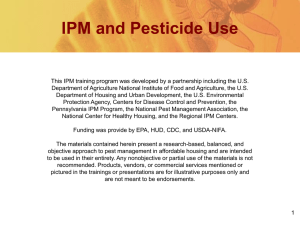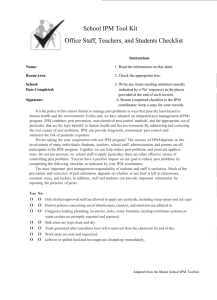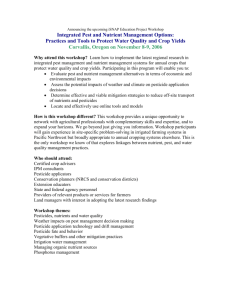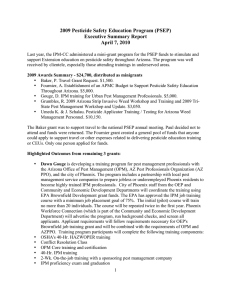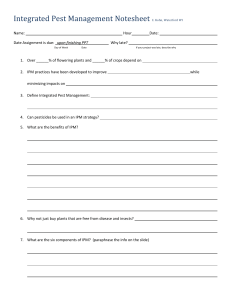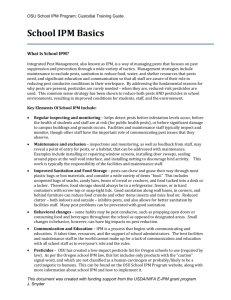San Mateo Countywide Stormwater Pollution Prevention Program
advertisement
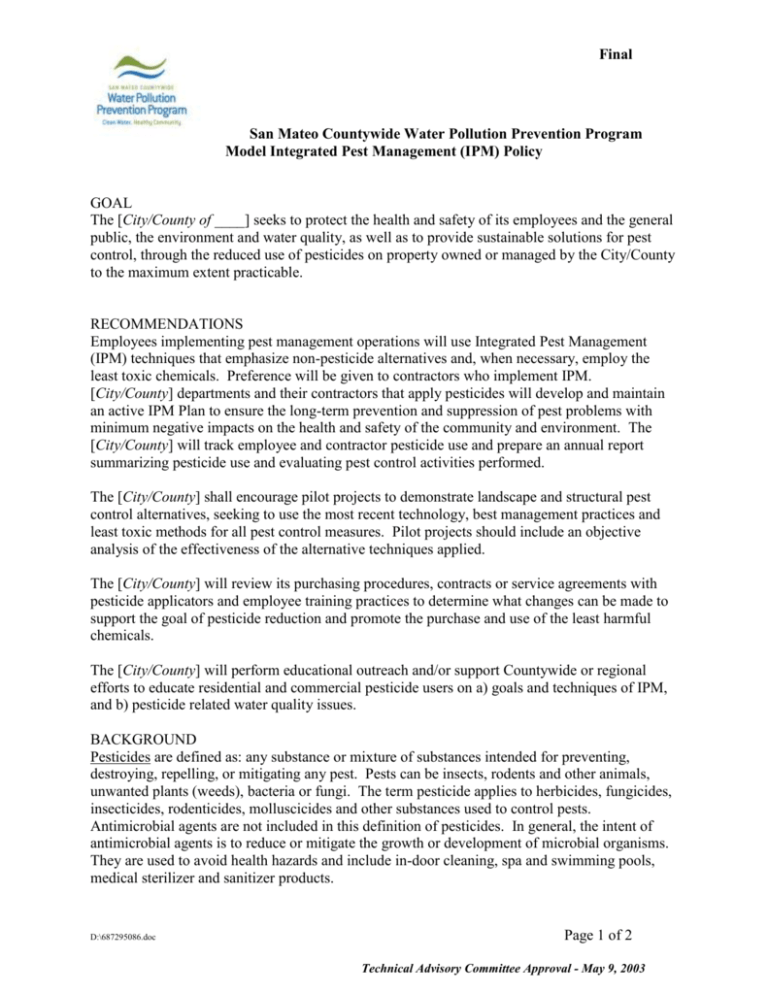
Final San Mateo Countywide Water Pollution Prevention Program Model Integrated Pest Management (IPM) Policy GOAL The [City/County of ____] seeks to protect the health and safety of its employees and the general public, the environment and water quality, as well as to provide sustainable solutions for pest control, through the reduced use of pesticides on property owned or managed by the City/County to the maximum extent practicable. RECOMMENDATIONS Employees implementing pest management operations will use Integrated Pest Management (IPM) techniques that emphasize non-pesticide alternatives and, when necessary, employ the least toxic chemicals. Preference will be given to contractors who implement IPM. [City/County] departments and their contractors that apply pesticides will develop and maintain an active IPM Plan to ensure the long-term prevention and suppression of pest problems with minimum negative impacts on the health and safety of the community and environment. The [City/County] will track employee and contractor pesticide use and prepare an annual report summarizing pesticide use and evaluating pest control activities performed. The [City/County] shall encourage pilot projects to demonstrate landscape and structural pest control alternatives, seeking to use the most recent technology, best management practices and least toxic methods for all pest control measures. Pilot projects should include an objective analysis of the effectiveness of the alternative techniques applied. The [City/County] will review its purchasing procedures, contracts or service agreements with pesticide applicators and employee training practices to determine what changes can be made to support the goal of pesticide reduction and promote the purchase and use of the least harmful chemicals. The [City/County] will perform educational outreach and/or support Countywide or regional efforts to educate residential and commercial pesticide users on a) goals and techniques of IPM, and b) pesticide related water quality issues. BACKGROUND Pesticides are defined as: any substance or mixture of substances intended for preventing, destroying, repelling, or mitigating any pest. Pests can be insects, rodents and other animals, unwanted plants (weeds), bacteria or fungi. The term pesticide applies to herbicides, fungicides, insecticides, rodenticides, molluscicides and other substances used to control pests. Antimicrobial agents are not included in this definition of pesticides. In general, the intent of antimicrobial agents is to reduce or mitigate the growth or development of microbial organisms. They are used to avoid health hazards and include in-door cleaning, spa and swimming pools, medical sterilizer and sanitizer products. D:\687295086.doc Page 1 of 2 Technical Advisory Committee Approval - May 9, 2003 Integrated Pest Management (IPM) is an ecosystem-based strategy that focuses on long-term prevention of pests or their damage through a combination of techniques such as biological control, habitat manipulation, modification of cultural practices, and use of resistant varieties. Pesticides are used only after monitoring indicates they are needed according to established guidelines, and treatments are made with the goal of removing only the target organism. Pest control materials are selected and applied in a manner that minimizes risks to human health, beneficial and nontarget organisms, and the environment. IPM techniques could include biological controls (e.g., ladybugs and other natural enemies or predators); physical or mechanical controls (e.g., hand labor or mowing); cultural controls (e.g., mulching, discing, or alternative plant type selection); and reduced risk chemical controls (e.g., soaps or oils). [City/County] owned or managed property includes but is not limited to parks and open space, golf courses, roadsides, landscaped medians, flood control channels and other outdoor areas, as well as municipal buildings and structures. D:\687295086.doc Page 2 of 2 Technical Advisory Committee Approval - May 9, 2003




